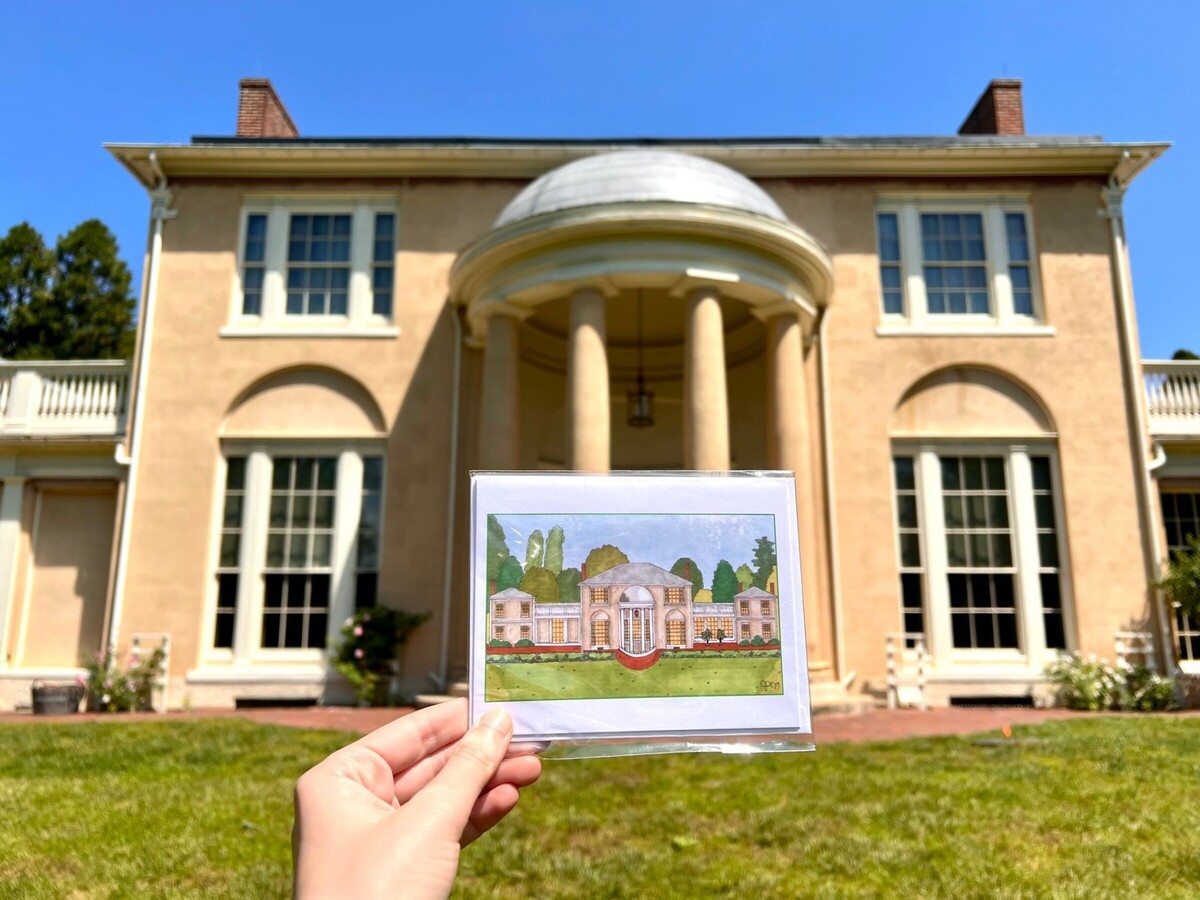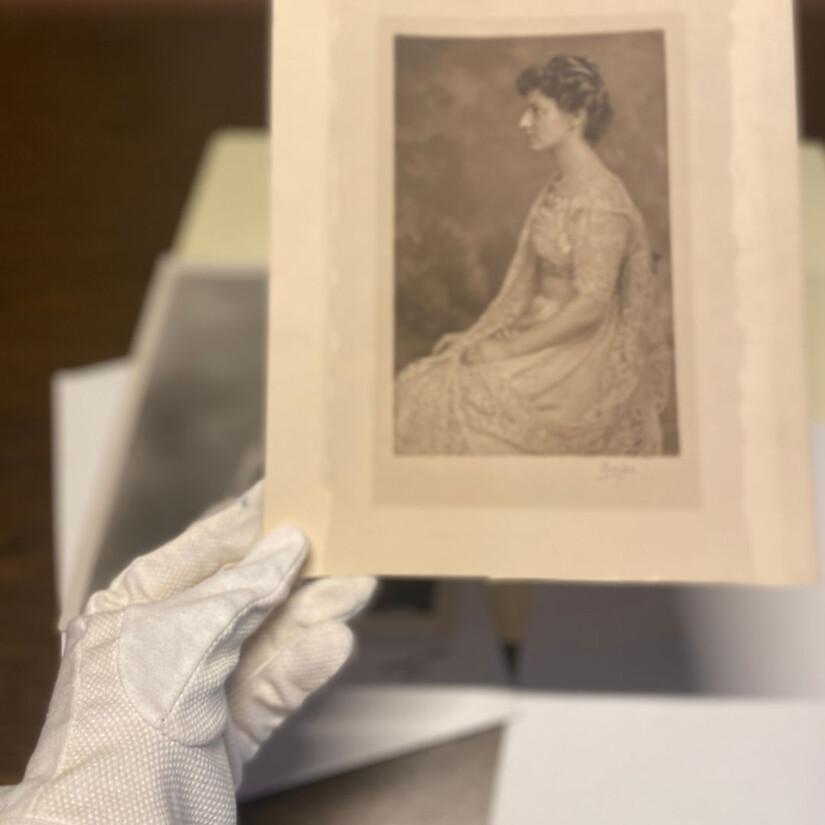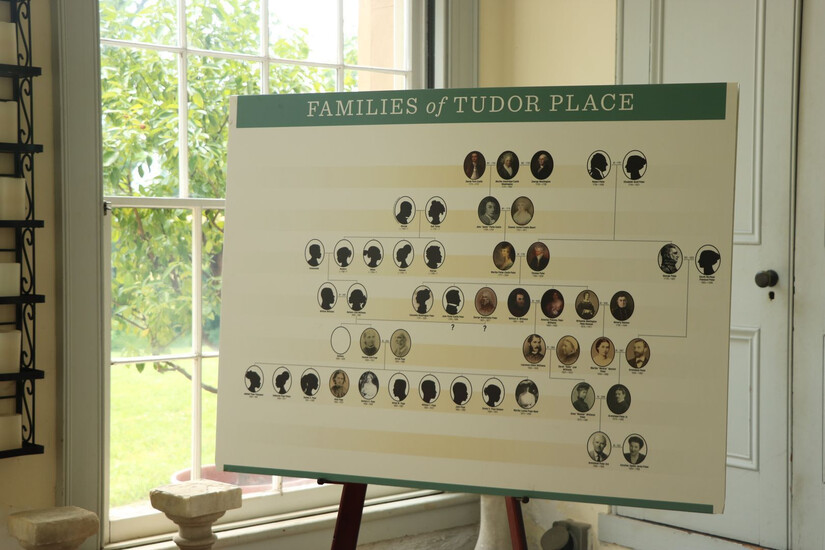Image


Tudor Place was home to the Peter family from 1805 until 1983. The estate’s first owners were Martha Custis Peter and Thomas Peter. Martha Custis was born at Mount Vernon, the granddaughter of Martha Washington and step-granddaughter of George Washington. Thomas Peter was the son of a prominent tobacco merchant who was Georgetown’s first mayor. Tudor Place has close ties to the legacy of America’s first First Family and is the only property in the District of Columbia connected to George and Martha Washington.
The Nacotchtank/Anacostin and Piscataway people inhabited land along the Potomac River when the English began exploring the area in the early 1600s. Infectious diseases introduced by Europeans and armed conflict that resulted from indigenous people defending their ancestral lands devastated these communities. These events combined with unscrupulous land deals that indigenous people were forced to accept provided the English with the means to claim ownership of land and grant it to colonists.

One of these grants included the original tract of land occupied by Tudor Place, which was part of the “Rock of Dumbarton” (originally, “Dunbarton”) tract in George Beall’s Second Addition to Georgetown, an area also known as Georgetown Heights. In 1794, Beall’s grandson, Thomas Beall, sold a portion of his land to Francis Lowndes, a merchant and importer from Bladensburg, Maryland. Lowndes owned the property for eleven years during which he constructed the two wings of the present historic house. Lowndes intended to complete the house but never did, instead selling the property to Martha and Thomas Peter. Martha Parke Custis was Martha Washington’s granddaughter who married Thomas Peter.
Frances Lowndes sold the property in 1805 to Martha and Thomas Peter. The six generations of Peters who lived here were witnesses to a ceaseless parade of events that shaped the nation, including the burning of Washington in 1814, slavery, the Civil War, both World Wars and the Cold War.
As a historic site that bears the scars of slavery, Tudor Place seeks to look this injustice in the eye. Read Executive Director Mark Hudson’s comment on standing in solidarity with those whose voices cry out for justice here. Learn about the enslaved workers and domestic servants who worked and lived on site.
During the 178 years of the family’s residence, Tudor Place had four private owners, each of whom demonstrated a loving respect for this landmark and a commitment to its preservation. The final private owner, Armistead Peter 3rd had a bold vision that Tudor Place should become a museum for the enjoyment and enrichment of the public. During the 1960s he put into motion plans for accomplishing this vision. In 1960 he established the site’s designation as one of the nation’s first National Historic Landmarks, he created the Carostead Foundation (today Tudor Place Foundation) in 1966, and established a conveyance of the first historic preservation easement to the U.S. Department of the Interior.

Tudor Place opened to the public in October 1988, fulfilling the dream Armistead Peter 3rd outlined in his will. Although the programs and activities of the site have expanded beyond his wildest dreams, Tudor Place remains true to his directive, “that it be considered not as a period museum but as a house lived in and loved by generations of our family and in which they found great happiness.”
Tudor Place Historic House & Garden preserves the stories of six generations of descendants of Martha Washington, and the enslaved and free people who lived and worked at this Georgetown landmark for nearly two centuries. By examining their legacy, we challenge ourselves and our visitors to celebrate the triumphs and to confront the complexities of the past.
Tudor Place attains this mission through:
An honest look at the past to realize a better future.
Read about Tudor Place’s strategic plan addressing inclusivity, stewardship and identity in the VISION 2020 statement. Click here.
November 11, 2022/
November 10, 2022/
August 2, 2022/

November 19, 2022
REGISTER >

November 30, 2022
REGISTER >

December 1, 2022
REGISTER >

December 1, 2022
REGISTER >Follow a manual added link